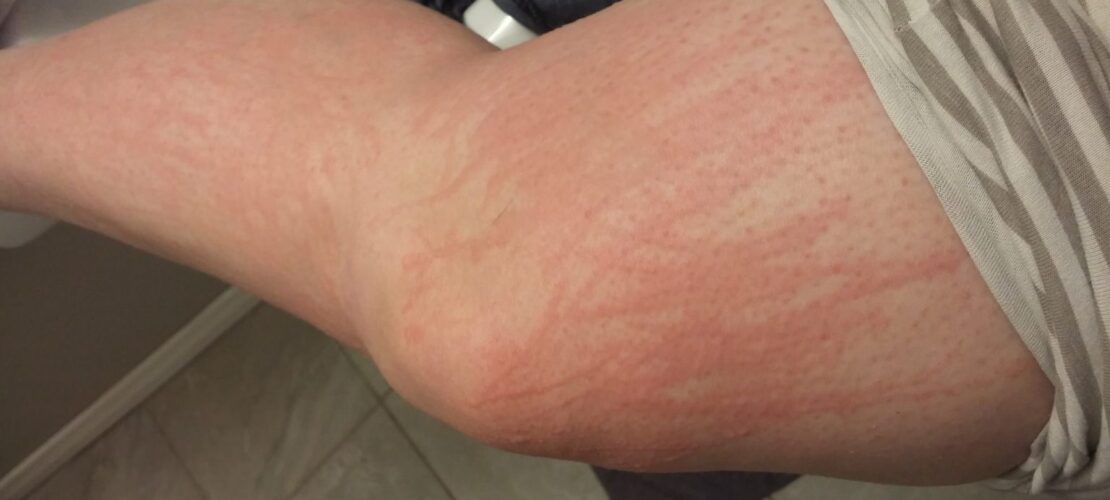Dermatographia is a skin condition that presents in various ways, with causes and symptoms that can differ from person to person. This makes it tricky to recognize since symptoms only appear after a trigger, like scratching, friction from clothing, or temperature changes. The first occurrence often catches people off guard, as symptoms seem to develop out of nowhere.
In recent years, online communities have shared more personal stories and symptoms related to dermatographia, helping to build a clearer picture of this condition. Here, we’ll dive into the most common dermatographia symptoms reported online, updated for 2025, along with some new insights from recent studies.
Itching and Redness: The Most Common Symptoms
One of the earliest signs of dermatographia that people report is itching, often accompanied by redness. This happens when skin is irritated by even light contact or pressure. According to a 2023 report by the American Academy of Dermatology, over 70% of individuals with dermatographia experience itching as the first symptom.
Tight clothing is often a major trigger. For example, online forums frequently mention how workout clothes or even snug socks cause flare-ups. One user shared, “After wearing tight leggings for just a short jog, I noticed an intense itch followed by raised red marks.” This matches my experience, where tight-fitting clothing during exercise often causes itching followed by noticeable redness.

The redness, which is usually a response to the scratching or rubbing, tends to show up alongside the itching. The affected area can range from a small patch to larger sections of the body. Health experts at Healthline confirm that in severe cases, these red marks can cover the chest or back, lasting anywhere from a few minutes to several hours.
Raised Marks: Dermatographia’s Signature Symptom
One of the most distinctive signs of dermatographia is the appearance of raised, linear marks on the skin. These raised welts often follow the path of scratching or rubbing, which is why dermatographia is sometimes called “skin writing.” When pressure is applied to the skin, the raised marks can mimic the pattern of that pressure, whether it’s a straight line or even a word.
The National Institutes of Health has noted that around 5% of the population experiences dermatographia. In many cases, these raised welts appear within minutes of skin irritation and can last anywhere from half an hour to a full day, depending on the severity.
From my own experience, I’ve found that these marks often appear about five minutes after I’ve scratched or rubbed my skin. They start off as mild welts but can become more prominent if I don’t resist the urge to scratch further. The marks can look dramatic, but they aren’t harmful and typically fade on their own.
Swelling and Inflammation: Triggered by Environmental Factors
Swelling or inflammation along the skin’s surface is another commonly reported symptom. What makes this aspect of dermatographia tricky is that it can be influenced by environmental factors. Cold, dry weather, for instance, can worsen the condition, while heat from showers or saunas can also make symptoms flare. A 2022 study in the Journal of Dermatological Science highlighted that people with dermatographia are particularly sensitive to extreme temperatures.

For me, I’ve noticed that cold weather, combined with dry skin, tends to make the symptoms worse. People on social media often share similar stories, noting that when the skin dries out, it becomes more vulnerable to itching, redness, and swelling. Others report that stress or alcohol consumption can also trigger stronger reactions.
The Impact of Dermatographia on Daily Life
Living with dermatographia can be frustrating due to its unpredictable nature. Symptoms can appear during everyday activities—like wearing certain clothes or taking a hot shower—and online discussions often reveal how challenging it can be to manage. People regularly share stories about flare-ups triggered by everyday actions, from wearing a backpack to sleeping in certain positions.
As more people discuss their symptoms on forums and social media, the collective understanding of dermatographia grows. For those looking to learn more or seeking support, the American Academy of Dermatology and the National Institutes of Health offer valuable resources for managing and understanding this condition.


